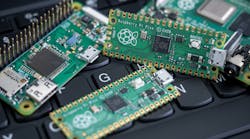Opening Up Linux for Automotive Applications
What you’ll learn:
- Why is Elektrobit bringing open-source software to the automotive industry?
- What advantages and disadvantages are there to using open-source Linux in safety-critical applications?
Linux has a massive community, including the embedded space, which places many demands on developers. Among them is tackling safety and security concerns. Utilizing Linux in automotive applications and other safety-critical applications requires additional certifications such as ISO 26262.
Elektrobit's Approach to Open Source in the Automotive Sector
I talked with Elektrobit’s Sr. Director of Strategic Project Management for SDVs, Moritz Neukirchner, about the company’s open-source initiative (watch the video above). Elektrobit’s EB corbos Linux, built on Canonical’s Ubuntu, was released last year.
It supports ASIL B certification and standards like ISO 26262 as well as security standards. This is the same space addressed by Automotive Grade Linux (AGL), but EB corbos Linux already meets the certifications. EB corbos Linux is available as a free download for platforms like QEMU, x86-64, NXP’s S32G, and Raspberry Pi. Developers can also use it with the AWS Marketplace and Microsoft Visual Studio Code.
With EB corbos Linux for Safety Applications, Elektrobit provides up to 15 years of long-term security and software maintenance. It also has additional services for Linux projects as well as embedded OCI-compliant container support, plus embedded event management with logging support.
Why Use Linux in Cars?
Automotive vendors have many challenges, including keeping up with innovation and meeting safety and security standards. Supporting a vehicle over the long term now means adopting security updates to address new Common Vulnerabilities and Exposures (CVEs) as well as providing support for new applications from third parties. While automotive OEMs would like to provide all of the software that’s ever been used in a vehicle, it tends to limit the features available to vehicle owners.
Building solutions based on Linux has a number of advantages. For instance, there’s the general availability of developers experienced in Linux, as well as third-party vendors with middleware and applications that run on top of Linux.
ASIL B certification focuses on applications like sensors, controls, telematics, and consoles and displays. This includes navigation systems and infotainment. ASIL D addresses functions requiring that higher level of certification, such as engine control and braking. Providing third-party features and services for the latter may be a challenge, but it’s something that fits well with ASIL B requirements.

